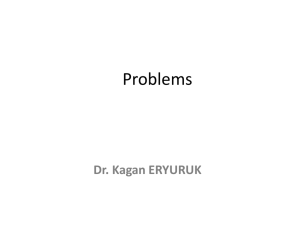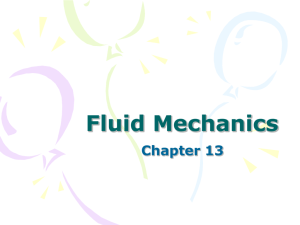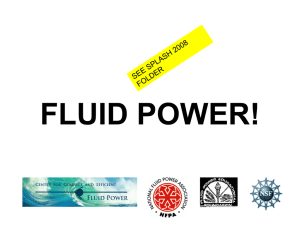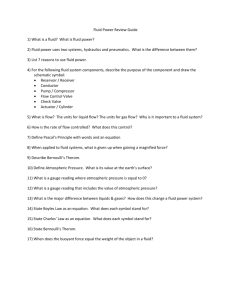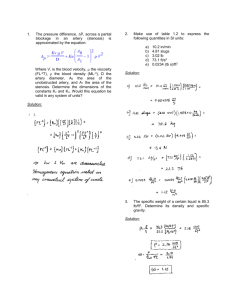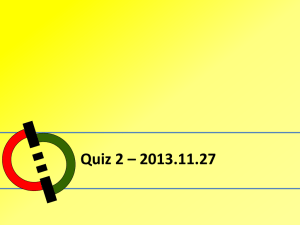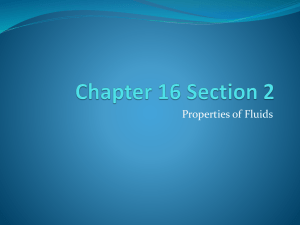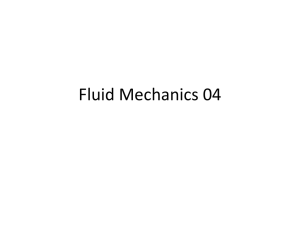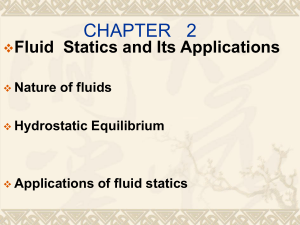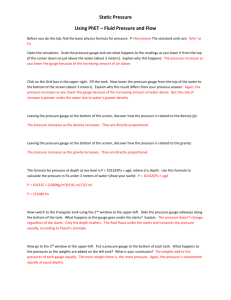Unit 3 Review
advertisement
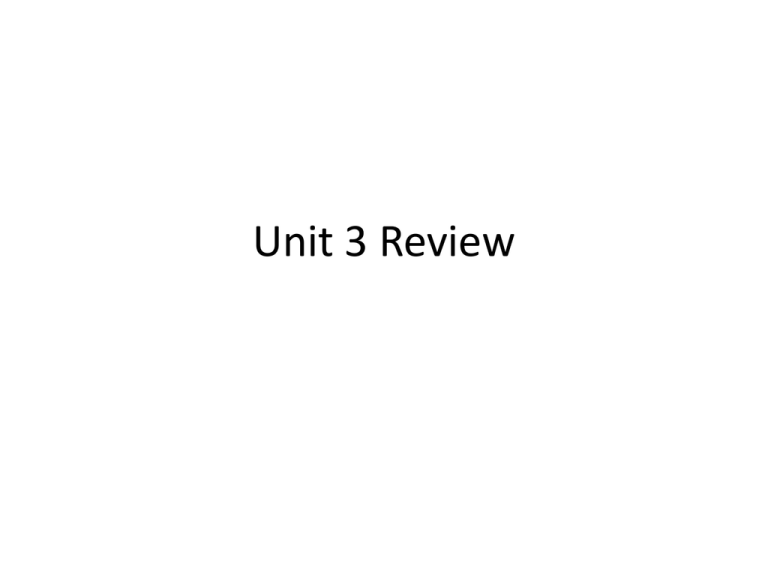
Unit 3 Review Machine Control Flowcharts A flowchart is a schematic representation of an algorithm or a process. Step-by-step Parts of a Flowchart Start/end Process Input/output Arrows Decision Display Control Systems • Designed to provide consistent process control and reliability • Control system protocols are an established set of commands or functions typically created in a computer programming language Start Light on Motor 1 on CW for 5 sec Motor 1 off End Control Systems • Open loop: no feedback used in processes • Closed loop: feedback used in the programming to make operational and process decisions (temp, time, analog value, digital value, etc.) • Digital: signals have 2 states: 1 (closed) or 0 (open) (Switch, phototransistor) • Analog: data represented continuously with variable quantities (photoresistor, NTC resistor, potentiometer) When the program starts, lamp (M1) is turned ON, and the computer checks to see if the switch (I1, wired normally closed) is being pressed. The program will loop back until the switch is pressed. When the switch is pressed, the value of variable A will be incremented by 1. The computer will then wait 0.2 seconds before checking the value of variable A to see if it is greater than or equal to 13. If the value of variable A is less than or equal to 12, the program will loop back to the beginning. If variable A is greater than or equal to 13, the lamp will turn OFF and the program will end. Fluid Power Fluid Power • A system that transmits and controls energy through the use of pressurized liquid or gas • Pneumatics - the media used is air • Hydraulics - the media used is oil or water 4 Basic Components of Fluid Systems 1. Reservoir (Tank): Storage device which holds the fluid 2. Pump or Compressor: Device used to move fluids 3. Valves: Regulate the direction of fluid flow 4. Actuator (Cylinder): Mechanical device for moving or controlling a mechanism or system Common Pneumatic System Components Transmission Lines Regulator Filter Drain Directional Control Valve Receiver Tank Cylinder Pressure Relief Valve Compressor National Fluid Power Association & Fluid Power Distributors Association Properties of Compressed Air • • • • • Availability Easily stored in large volumes Simplicity in design and control Low system cost due to low component cost Environmentally friendly Hydraulics An area of engineering science that deals with liquid flow and pressure Pressure acts equally everywhere!!! A Hydraulic System Hydraulic Fluids • Liquid pumped through a hydraulic system • Petroleum-based or synthetic oil • Serve four major functions: 1. 2. 3. 4. Power transmission Lubrication of moving parts Sealing of spaces between moving parts Heat removal • Relatively Incompressible! Fluid Power Systems • Transmit force over great distances • Multiply an input force • Increase the distance an output will move What can Fluid Power Do ? • Operation of system valves for air, water or chemicals • Operation of heavy or hot doors • Unloading of hoppers in building, steel making, mining and chemical industries • Ramming and tamping in concrete and asphalt laying Properties of Gases Gases are affected by 3 variables – Temperature (T) – Pressure (p) – Volume (V) Gases have no definite volume Gases are highly compressible Gases are lighter than liquids Properties of Gases Absolute Pressure Gauge Pressure: Pressure on a gauge does not account for atmospheric pressure on all sides of the system Absolute Pressure: Atmospheric pressure plus gauge pressure Not on formula sheet Gauge Pressure + Atmospheric Pressure = Absolute Pressure Atmospheric pressure equals 14.7 lb/in.2 If a gauge reads 120 psi, what is the absolute pressure? 120 lb/in.2 + 14.7 lb/in.2 = 134.7 lb/in.2 Properties of Gases Absolute Temperature 0°F does not represent a true 0° Absolute Zero = -460°F Absolute Temperature is measured in degrees Rankine (°R) °R = °F + 460 Not on formula sheet If the temperature of the air in a system is 65 °F, what is the absolute temperature? Answer: 65 °F + 460 = 525 °R Boyle’s Law The volume of a gas at constant temperature varies inversely with the pressure exerted on it. NASA p1 (V1) = p2 (V2) Symbol Definition Example Unit V Volume in.3 Boyle’s Law Example A cylinder is filled with 40 in.3 of air at a pressure of 60 psi. The cylinder is compressed to 10 in.3. What is the resulting absolute pressure? p1 = 60 lb/in.2 V1 = 40 in.3 p2 = ? V2 = 10 in.3 Convert p1 to absolute pressure. p1 = 60 lb/in.2 + 14.7 lb/in.2 = 74.7 lb/in.2 Formula p(1V )1 (Vp)2 2 lb Sub / Solve 74.7 2(40in. )3 (10in. p2 ) in. 2988 in . lb p2 32 10in. lb Final p 2 298.8 2 in 3 Charles’ Law Volume of gas increases or decreases as the temperature increases or decreases, provided the amount of gas and pressure remain constant. NASA V1 V2 T1 T2 Note: T1 and T2 refer to absolute temperature. Charles' Law Example An expandable container is filled with 28 in.3 of air and is sitting in ice water that is 32°F. The container is removed from the icy water and is heated to 200°F. What is the resulting volume? V1 = 28in.3 V2 = ? T1 = 32°F T2 = 200°F Convert T to absolute temperature. T1 = 32°F + 460°F =482°R T2 = 200°F + 460°F =660°R Charles' Law Example An expandable container is filled with 28 in.3 of air and V1 V2 is sitting in ice water that is Formula T1 T2 32°F. The container is removed from the icy water 3 V2 28 in. and is heated to 200°F. What Sub / Solve 492R 660R is the resulting volume? 18480 in3 R V1 = 28in.3 V2 = ? 492 R T1 = 32°F T2 = 200°F Convert T to absolute temperature T1 = 32°F + 460°F = 492°R T2 = 200°F + 460°F = 660°R Final V2 V2 37.56 in.3 Gay-Lussac’s Law Absolute pressure of a gas increases or decreases as the temperature increases or decreases, provided the amount of gas and the volume remain constant. p1 T1 p2 Not on formula sheet) T2 Note: T1 and T2 refer to absolute temperature. p1 and p2 refer to absolute pressure. Gay-Lussac’s Law Example A 300 in.3 sealed air tank is sitting outside. In the morning the temperature inside the tank is 62°F, and the pressure gauge reads 120 lb/in.2. By afternoon the temperature inside the tank is expected to be close to 90°F. What will the absolute pressure be at that point? V = 300 in.3 p1 = 120 lb/in.2 p2 = ? T1 = 62°F T2 = 90°F Formula p1 p 2 T1 T2 134.7lb / in.2 p2 Sub / Solve 522R 550R Convert p to absolute pressure. 2 2 2 74085 lb / in R p1= 120 lb/in. + 14.7 lb/in. p2 = 134.7 lb/in.2 522 R Convert T to absolute temperature. T1 = 62°F + 460°F = 522°R T2 = 90°F + 460°F = 550°R Final p2 141.9 lb / in.2 Gay-Lussac’s Law Example A 300 in.3 sealed air tank is sitting outside. In the morning the temperature inside the tank is 62°F, and the pressure gauge reads 120 lb/in2. By afternoon the temperature inside the tank is expected to be closer to 90°F. What will the absolute pressure be at that point? Final p2 141.9 lb / in.2 If the absolute pressure is 141.9 lb/in.2, what is the pressure reading at the gauge? 141.9 lb/in.2 – 14.7 lb/in.2 = 127.2 lb/in.2 Pascal’s Law Pressure exerted by a confined fluid acts undiminished equally in all directions. Pressure: The force per unit area exerted by a fluid against a surface F p A Symbol Definition Example Unit p Pressure lb/in.2 F Force lb A Area in.2 on formula In hydrostatic systems: Not sheet P1 = P2 or F1/A1 = F2/A2 Pascal’s Law Example How much pressure can be produced with a 3 in. diameter (d) cylinder and 50 lb of force? d = 3 in. F = 50 lb Formula A r 2 Formula Sub / Solve A 1 ( .5 )2 Final 2 A 7.1in. Sub / Solve Final p=? A=? F p A 50 lb p 2 7.1in. lb p 7.0 2 in. Application of Pascal’s Law in a Simple Hydrostatic System How much force must you exert on piston A to lift a load on piston B of 500 lbs? What is the ideal mechanical advantage of this system? Hydrostatic system: P1 = P2 P=F A P1=P2 F1 = F2 A1 A2 F1 = 1 in^2 F1 = 1 lb 500 lbs 500 in^2 Additional Examples 1. I have a car lift with a 12” radius. How heavy a car can I lift if a 3 Lb force is applied to a piston with a 1” radius? 2. I have a gas with a pressure of 53 kPa at a temperature of 470 C. I heat the gas an additional 200 degrees. What will the new pressure be if the volume is constant? 1. I have a car lift with a 12” radius. How heavy a car can I lift if a 3 Lb force is applied to a piston with a 1” radius? Hydrostatic system P=F A P1=P2 P1 = 3 lb pi*1”*1” P2 = X pi*12”*12” X = 3 lb * pi *12” * 12” = 432 lb pi*1”*1” 2. I have a gas with a pressure of 53 kPa at a temperature of 470 C. I heat the gas an additional 200 degrees. What will the new pressure be if the volume is constant? P1 * V1 = P2 * V2 T1 T2 53 kPa 320 = P2 520 T1 = 47 + 273 = 320 T2 = 200 + 320 = 520 P2 = 520 * 53 kPa 320 Watch additional heating versus heating to a certain temperature. If the problem said I heat the gas to 200 degrees, then T2 = 200 + 273 = 473 degrees.
